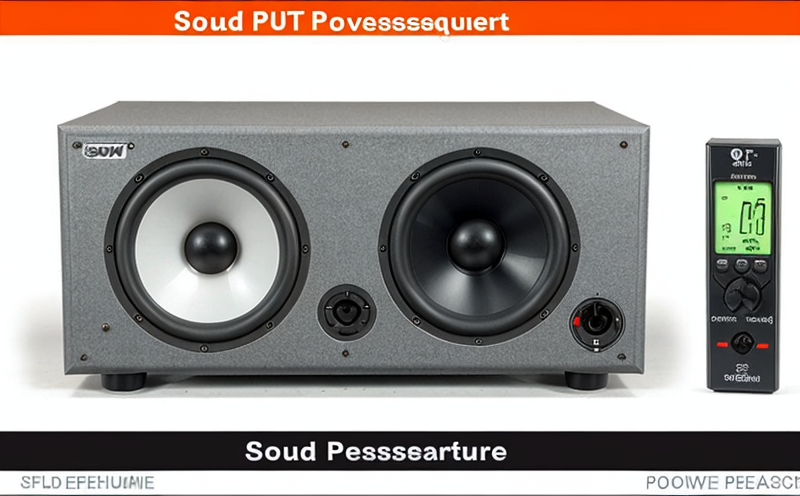ISO 11203 Determination of Emission Sound Pressure Levels (Surface Reflection)
The ISO 11203 standard is a critical component in the field of acoustics, vibration, and noise testing. It provides methodologies for determining emission sound pressure levels from surfaces using surface reflection techniques. This service plays an essential role in ensuring that products meet stringent acoustic performance requirements across various sectors including automotive, aerospace, consumer electronics, and building construction.
The ISO 11203 standard specifically addresses the determination of emitted noise from the surfaces of products or components by measuring sound pressure levels at a specified distance from the surface. This technique is particularly useful for assessing noise emissions in environments where traditional free-field measurement methods may not be applicable due to obstacles, boundaries, or complex geometries.
The process involves placing microphones on or near the surface of the test specimen and using them to capture sound pressure signals. These signals are then processed according to ISO 11203 guidelines to calculate the emission sound pressure levels. This method is advantageous for evaluating the noise characteristics of components such as enclosures, ducts, and other structures that emit sound through their surfaces.
Accurate measurement of emitted sound from surfaces is crucial in industries like automotive manufacturing where regulatory compliance and consumer safety are paramount. By ensuring that products meet specified acoustic performance criteria, this service helps manufacturers avoid costly recalls and potential legal issues. Additionally, it supports continuous improvement initiatives aimed at reducing noise pollution and enhancing product quality.
Surface reflection techniques as described by ISO 11203 offer several advantages over other measurement methods. They allow for precise determination of sound pressure levels in confined spaces or around obstacles without requiring significant modifications to the test setup. This flexibility makes it particularly suitable for evaluating products with complex geometries or those installed within larger systems.
Another key advantage is its ability to provide detailed information about the spatial distribution of emitted noise from surfaces. This data can be invaluable during design iterations, helping engineers identify sources of unwanted sound and optimize designs accordingly.
- Enhanced Compliance: Ensures products meet necessary acoustic performance standards.
- Improved Product Quality: Identifies potential issues early in the development process.
By leveraging advanced measurement techniques, this service contributes significantly to maintaining high levels of product quality and reliability. It supports ongoing efforts towards achieving sustainable manufacturing practices by minimizing environmental impact through reduced noise emissions.
Why It Matters
The accuracy and consistency provided by ISO 11203 are crucial for ensuring that products meet stringent acoustic performance requirements. In industries where noise pollution can have significant implications on both human health and product functionality, these standards serve as a benchmark against which manufacturers must adhere.
For quality managers and compliance officers within organizations operating across diverse sectors, adherence to such international standards underscores their commitment to maintaining high-quality products while complying with local regulations. This not only protects the reputation of the company but also enhances customer satisfaction by delivering reliable goods that meet expectations.
R&D engineers benefit from this service as it enables them to conduct thorough evaluations during early stages of product development, leading to more informed decision-making processes regarding design changes and material selection. The detailed insights gained into noise characteristics contribute positively towards achieving quieter, safer products.
Procurement teams can also leverage the results obtained through ISO 11203 testing when sourcing components or materials for new projects. Knowing that suppliers adhere to these rigorous standards helps ensure consistency in supply chains and reduces risks associated with variability between batches of parts.
Benefits
- Regulatory Compliance: Ensures strict adherence to international acoustic performance standards.
- Informed Decision-Making: Provides comprehensive data on noise characteristics, guiding design improvements and material choices.
- Enhanced Product Quality: Identifies potential issues early in the development cycle, preventing costly rework or redesigns later on.
- Sustainability Focus: Contributes to achieving quieter products that minimize environmental impact through reduced noise emissions.
The benefits extend beyond mere compliance; they encompass improved product quality and enhanced customer satisfaction. By delivering reliable goods that meet expectations, companies can build stronger brand loyalty and gain a competitive edge in the market.
Moreover, adherence to ISO 11203 fosters an environment of continuous improvement within organizations by encouraging ongoing efforts towards achieving sustainable manufacturing practices. This includes minimizing waste generation during production processes as well as reducing noise pollution levels across all stages of product lifecycle.
Quality and Reliability Assurance
The ISO 11203 standard is integral to maintaining high standards of quality and reliability in acoustics, vibration, and noise testing. Its structured approach ensures consistent results across different laboratories and test facilities.
By following the prescribed procedures outlined in this international standard, laboratories can achieve accurate measurements that are reliable indicators of a product's acoustic performance. This consistency is vital for ensuring that products meet specified criteria set by regulatory bodies worldwide.
The use of standardized measurement techniques helps eliminate variability introduced during testing due to differences in equipment calibration or operator technique. As a result, manufacturers have greater confidence in the data obtained from ISO 11203 tests, knowing that it accurately reflects the true acoustic characteristics of their products.
For procurement teams, reliable test results provide assurance about the quality and consistency of components sourced from suppliers. This reduces risks associated with variability between batches or lots of parts received from various manufacturers.
- Consistent Results: Ensures accurate measurements across different laboratories and test facilities.
- Regulatory Compliance: Adherence to international standards guarantees that products meet necessary acoustic performance requirements.
- Risk Reduction: Reliable data helps procurement teams source high-quality components consistently from reliable suppliers.
The reliability of ISO 11203 testing contributes significantly towards building trust between stakeholders involved in product development, manufacturing, and distribution. It supports transparent communication regarding acoustic performance metrics, fostering collaboration among all parties concerned with achieving common goals related to quality assurance and continuous improvement.





